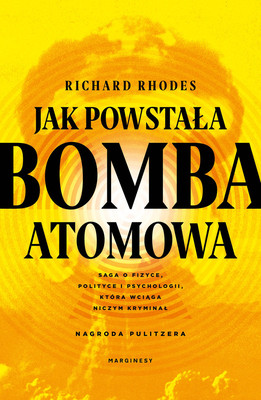
The New York Times (Late City Final ed.). ^ The book's entry on uses the quotation in "Editorial Reviews".Archived from the original on 29 June 2022. ^ "The Making of the Atomic Bomb | Winner, National Book Awards 1987 for Nonfiction".For a distinguished book of non-fiction by an American author that is not eligible for consideration in any other category, Three thousand dollars ($3,000). Archived from the original on 5 March 2022.

The Pulitzer Prizes | Columbia University.

^ "The 1988 Pulitzer Prize Winner in General Nonfiction".Nowhere else have I seen the whole story put down with such elegance and gusto and in such revealing detail and simple language which carries the reader through wonderful and profound scientific discoveries and their application." References Rabi, a Nobel laureate and one of the prime participants in the dawn of the atomic age, called it "an epic worthy of Milton. Praised both by historians and former Los Alamos weapon engineers and scientists, the book is considered a general authority on early nuclear weapons history, as well as the development of modern physics in general, during the first half of the 20th century. The narrative covers people and events from early 20th century discoveries leading to the science of nuclear fission, the Manhattan Project, and the atomic bombings of Hiroshima and Nagasaki. It won the Pulitzer Prize for General Non-Fiction, the National Book Award for Nonfiction, and a National Book Critics Circle Award. The Making of the Atomic Bomb is a contemporary history book written by the American journalist and historian Richard Rhodes, first published by Simon & Schuster in 1987. "synopsis" may belong to another edition of this title.Dark Sun: The Making of the Hydrogen Bomb The Making of the Atomic Bomb is at once a narrative tour de force and a document as powerful as its subject. Richard Rhodes takes us on that journey step-by-step, minute by minute, and gives us the definitive story of man’s most awesome discovery and invention.

What began merely as an interesting speculative problem in physics grew into the Manhattan Project, and then into the Bomb with frightening rapidity, while scientists known only to their peers-Szilard, Teller, Oppenheimer, Bohr, Meitner, Fermi, Lawrence, and von Neumann-stepped from their ivory towers into the limelight. From the theoretical discussions of nuclear energy to the bright glare of Trinity there was a span of hardly more than twenty-five years. In rich, human, political, and scientific detail, here is the complete story of the nuclear bomb.įew great discoveries have evolved so swiftly-or have been so misunderstood. With a new Introduction by the author, the twenty-fifth anniversary edition of the Pulitzer Prize-winning epic about how the atomic bomb came to be.


 0 kommentar(er)
0 kommentar(er)
